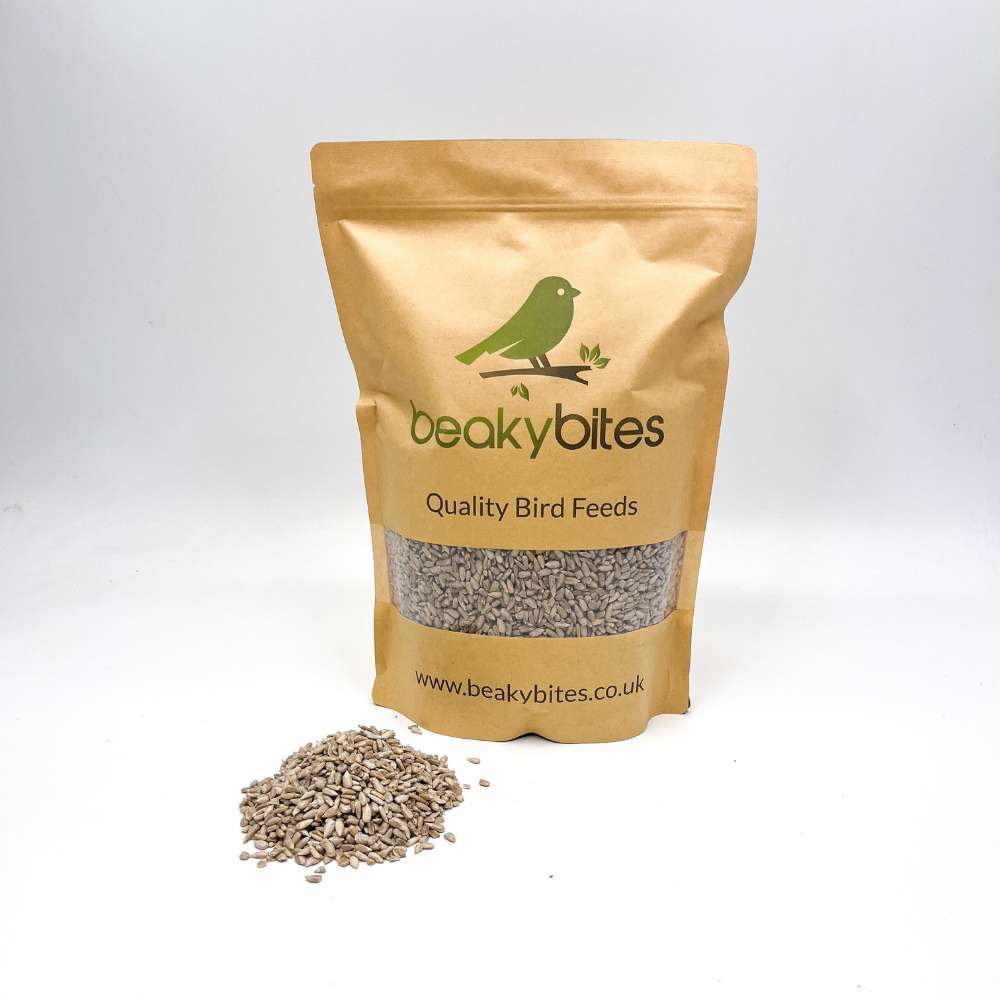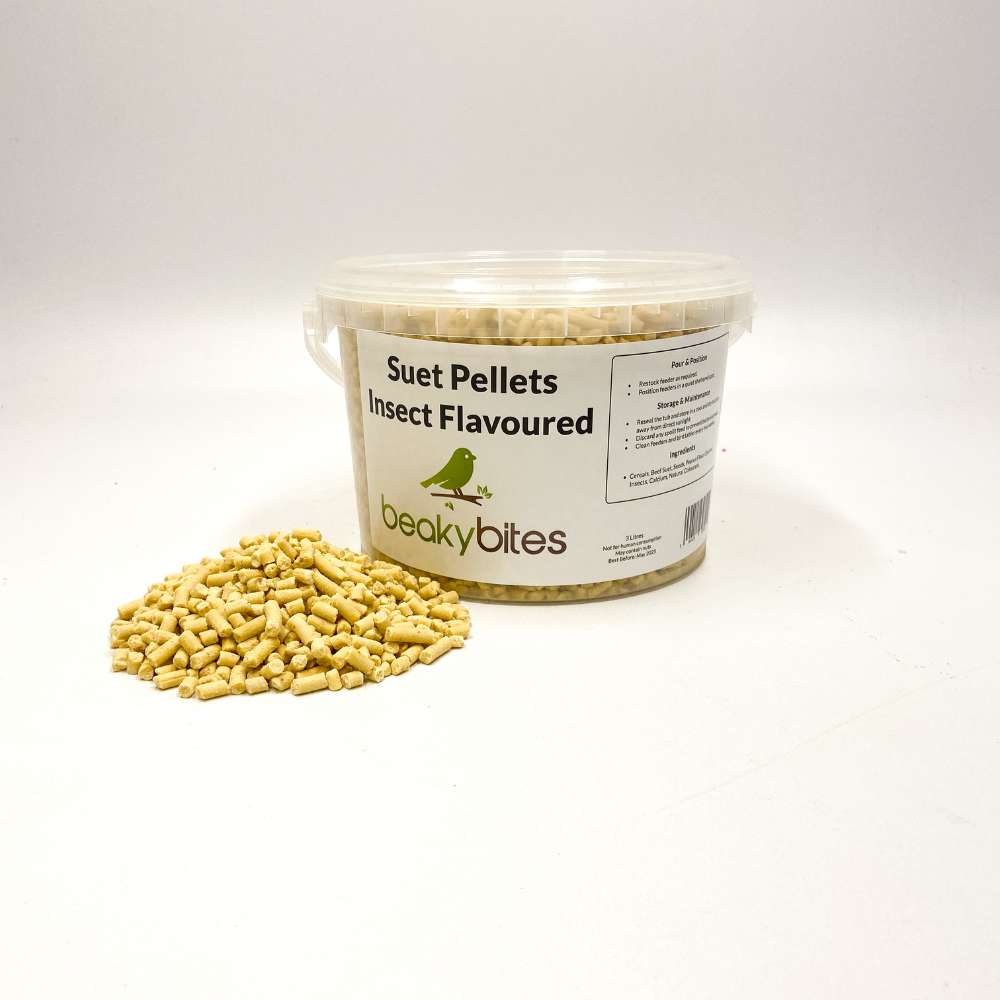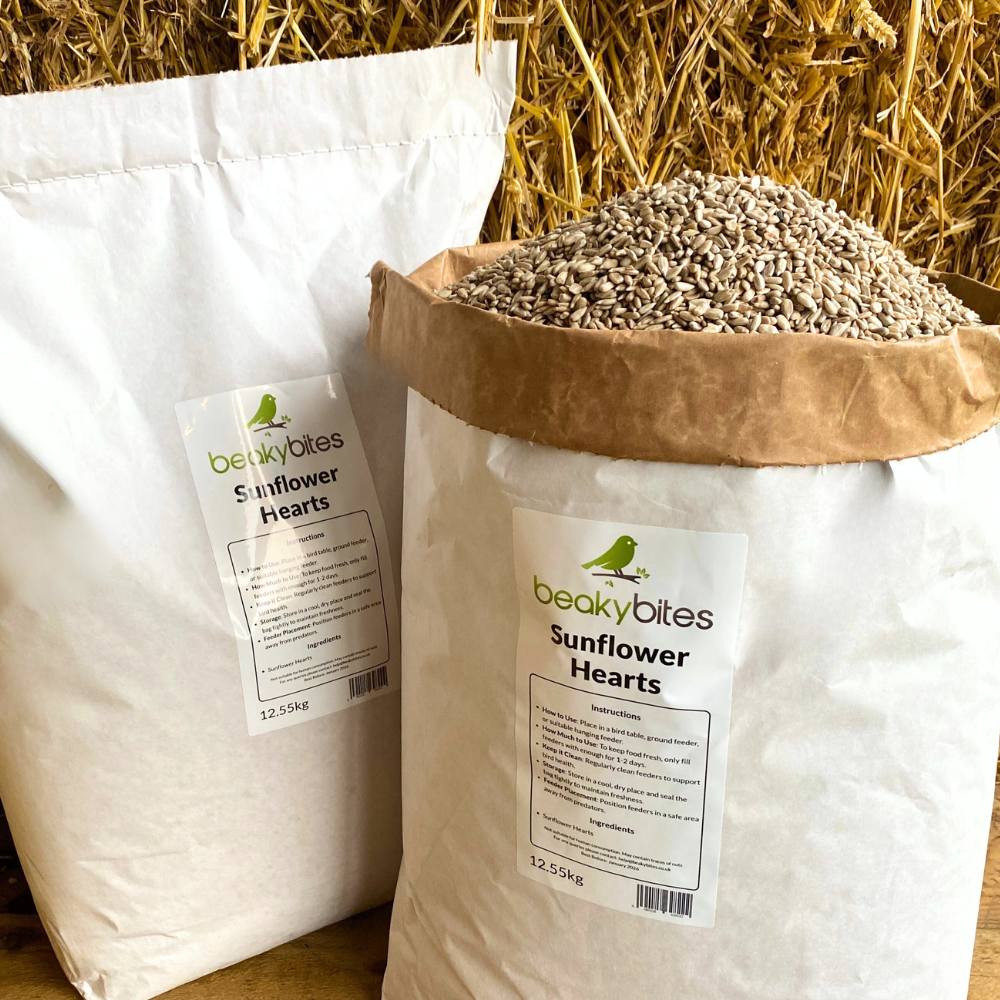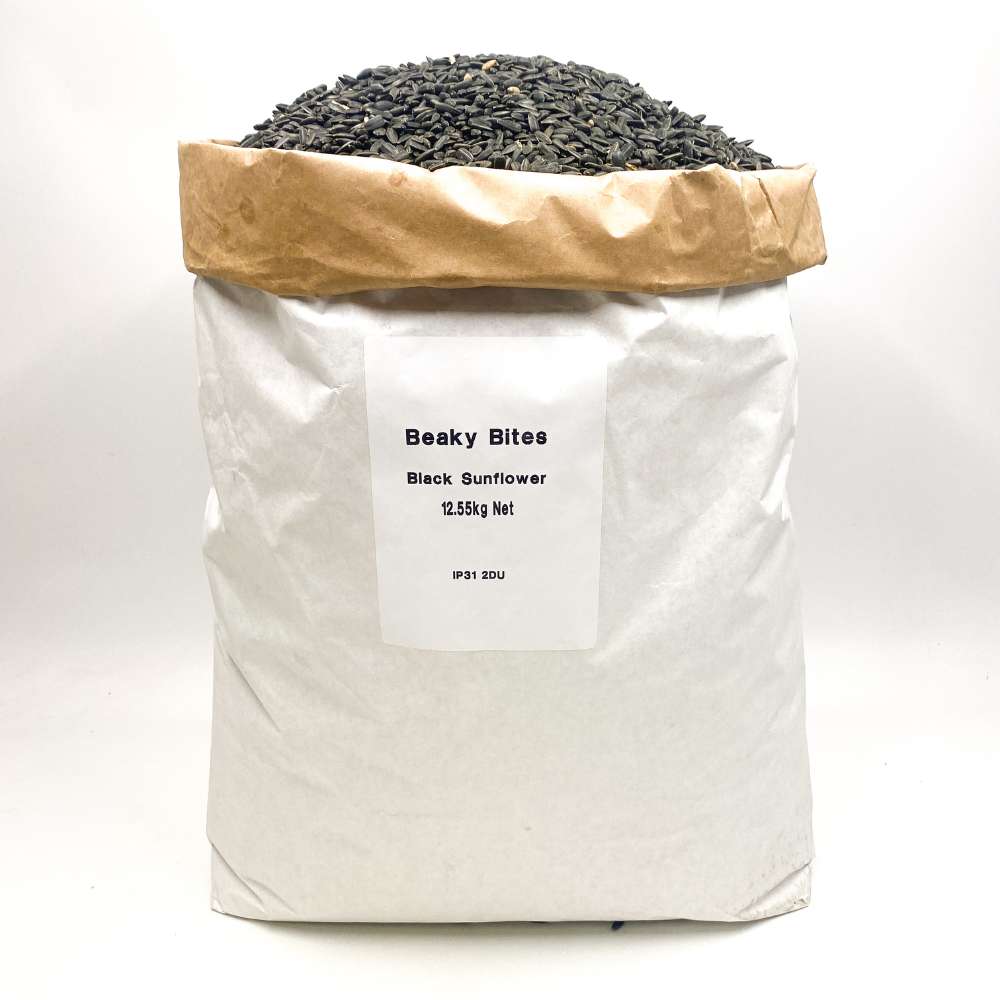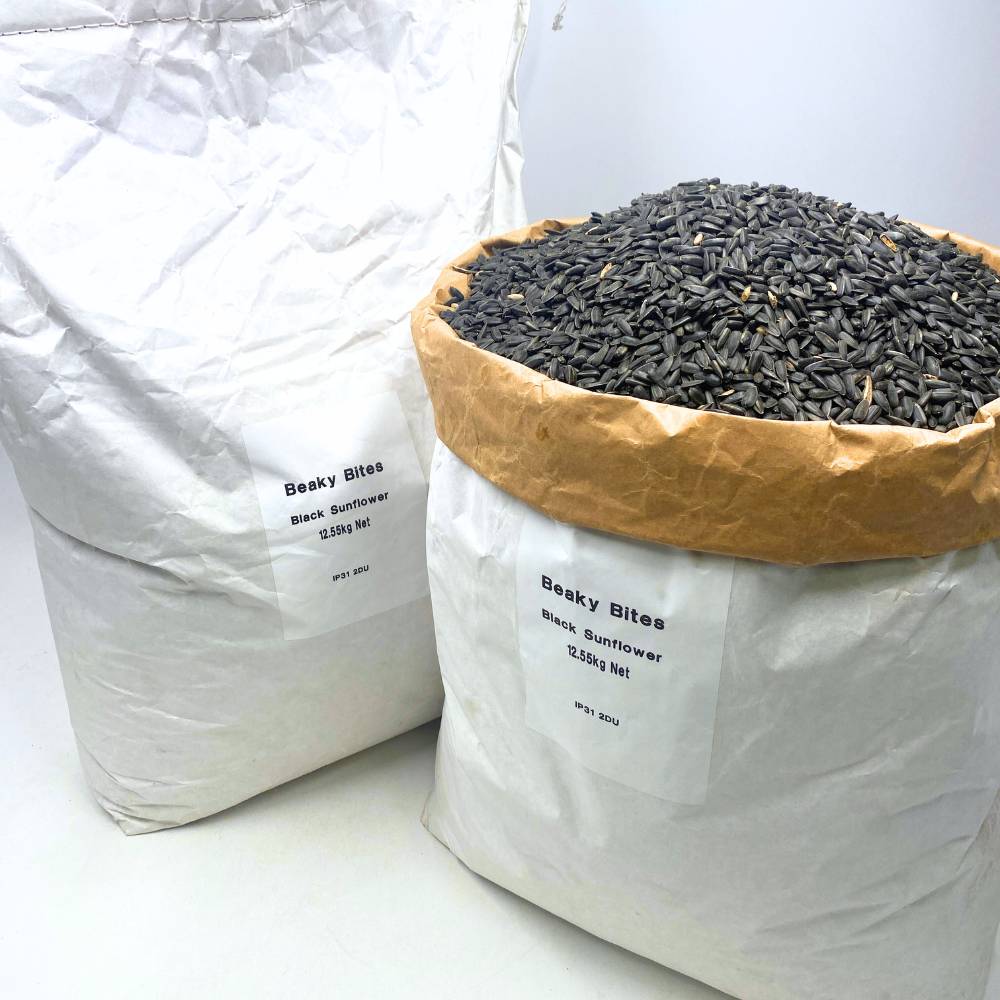Bird Fact File: Long Tailed Tit

Welcome to our bird guide series brought to you by Beaky Bites! In each post, we'll take a closer look at a beloved UK garden bird to help you better understand and appreciate these amazing birds. From identifying distinct features to discovering their favourite foods and nesting habits, this series aims to provide an overview of our feathered wildlife.
Let's Meet the Long tailed tit
Long tailed tit Fact File | |
|---|---|
| Size: | 14cm, head to tail |
| Wingspan: | 16-19cm |
| Weight: | 7-10g |
| Colours: | Brown, Black, White, Pink, Cream |
| Eggs: | 6-8 eggs per brood, 1 brood a year |
| Nesting: | Within thick thorny hedgerows or tree. |
| Population Status: | Stable |
The long-tailed tit is a sweet little bird, easily recognisable by its small size, fluffyness and long tail which is almost as long as its body. Its soft black, white and pinkish plumage is just so cute. They can be found flitting through woodlands, hedgerows and gardens in lively flocks searching for food. Known as Aegithalos caudatus in Latin, the long-tailed tit is part of the Aegithalidae family of small songbirds. With around 300,000 breeding pairs in the UK you can spot these social and active birds all year round.

Appearance and Behaviour
Long tailed tits are lovely little birds with soft fluffy plumage and their long tails which make up more than half their body length. Males and females are the same, black, white and pinkish on their small round bodies. Juveniles look similar but have less defined markings and slightly duller plumage until they mature.
Long tailed tits are insectivorous for most of the year, eating tiny insects and spiders in trees and shrubs. But in the winter they’ll also eat seeds and suet to keep their energy up. They’re often seen at suet feeders or picking at fat balls, their small beaks perfect for nipping at soft food.
They’re social birds and travel in tight family groups, sometimes joining up with other small birds like blue tits and great tits to forage. They hop quickly between trees and feeders, filling gardens, woodlands and hedgerows with life. Their high pitched gentle calls and soft chattering are a delight to hear in any outdoor space.
.jpg)
Where do They Hang Out and Eat?
Long tailed tits are clever feeders, they take what they can get all year round. In the spring and summer they mainly eat insects and spiders which provide the protein they need to raise their young. You’ll see them hopping through hedgerows or darting between branches, plucking tiny invertebrates from leaves and bark.
As autumn and winter roll in and insects disappear long tailed tits turn to suet, fat balls and other high energy foods in the garden. They love fat rich foods which help them through the cold months. Their acrobatic nature means they can cling to feeders with ease, often arriving in lively family groups which are a joy to have in any garden.
Long tailed tits live in a variety of habitats, woodlands, hedgerows, parks and gardens. They need trees and shrubs to nest and rest and open areas to forage. A wildlife friendly garden with suet feeders and dense shrubs will soon have these lovely birds in. Their social behaviour, soft calls and constant activity make them a pleasure to watch, anywhere outside.

Breeding and Nesting
Long-tailed tits start breeding in the spring, usually from March and can have two broods if conditions are good. A brood will have 8-12 tiny white eggs with red spots, the female incubates for 14-16 days. Both parents and other family members work hard to feed the chicks, they are fed a diet rich in insects to help them grow fast. The young fledge after 14-18 days but often stay with the family group for several weeks.
During breeding season long-tailed tits are more focused on nesting but still social. Their soft high pitched calls can be heard as pairs and family groups chat while foraging or tending to their nests. They form close family bonds, groups often work together to raise young.
Their nests are intricate domed structures made of moss, lichen, cobwebs and feathers, all carefully woven into a flexible and camouflaged home. These nests are usually hidden in dense bushes or hedgerows, shelter and protection for the eggs and chicks. Despite their delicate appearance long-tailed tit nests are impressive engineering, they expand as the chicks grow to accommodate the growing brood.
.jpg)
Attracting Them to Your Garden
Long-tailed tits are insect lovers, with small caterpillars, aphids, and spiders forming the bulk of their diet. If your garden is rich in insect life, it’s already a great spot for them, but you can encourage even more visits by adding feeders with suet pellets or insect-flavoured suet blocks. These high-energy foods are a perfect substitute when natural prey is scarce, especially during the colder months.
Suet is a favourite for long-tailed tits, offering them the essential fats they need to stay warm and active. Insect-flavoured suet pellets and fat balls are particularly appealing as they mimic their natural diet. Pair these with live or dried mealworms, and you’ll have a feeding station that’s hard for them to resist. Placing feeders near hedges or trees creates a sense of safety, allowing these delicate birds to cling and feed comfortably.
A bird-friendly garden that encourages insect life with native plants like hawthorn, birch, or ivy will naturally attract long-tailed tits. Adding suet-based feeders in autumn and winter provides the extra nutrition they need when insects are harder to find. Feeders designed for small birds, like mesh or tube feeders, are ideal, as they’re easy for long-tailed tits to access with their acrobatic feeding style.
By focusing on insect flavoured suet pellets, you can turn your garden into a haven for long-tailed tits. These lively and sociable birds bring a wonderful sense of activity and joy to any garden, especially during the quieter winter months!
Conclusion
Long tailed tits love gardens that have a mix of insects, suet and seeds and shrubs and trees to forage and nest in. They are social birds that thrive in areas with plenty of cover, dense hedgerows or wooded areas where they can flit about in small family groups. They especially love suet balls, mealworms and sunflower hearts which give them the energy to live their active lives.
To attract long tailed tits to your garden set up feeders for smaller birds and include suet blocks or fat balls. Add native shrubs like hawthorn or bramble and they will have shelter and extra food sources especially in the colder months. These little birds are a joy to watch as they flit between trees and feeders, bringing their sweet calls and acrobatics to your garden.
Frequently Asked Questions
How can I attract long-tailed tits to my garden?
- Answer: You can attract long-tailed tits by offering high-energy foods like suet, mealworms, and sunflower hearts, as well as providing shrubs or trees for shelter.
What type of feeders are best for long-tailed tits?
- Answer: Long-tailed tits prefer feeders with small perches, such as tube or mesh feeders, to easily access seeds, suet, or mealworms.
What do long-tailed tits eat?
- Answer: Long-tailed tits primarily eat insects, seeds, and berries, and they are especially fond of suet, mealworms, and sunflower hearts in gardens.
Do long-tailed tits visit gardens year-round?
- Answer: Yes, long-tailed tits are frequent garden visitors year-round, particularly in the colder months when they need extra food for energy.
Where do long-tailed tits build their nests?
- Answer: Long-tailed tits build their nests in dense shrubs, trees, or hedgerows, often near the tips of branches to provide cover from predators.



